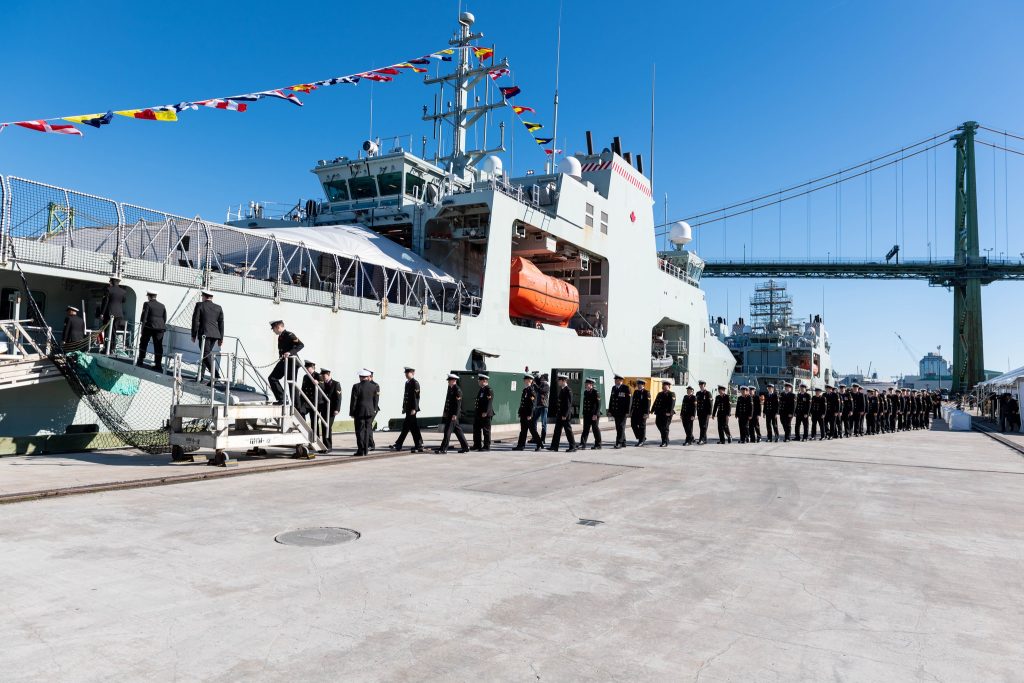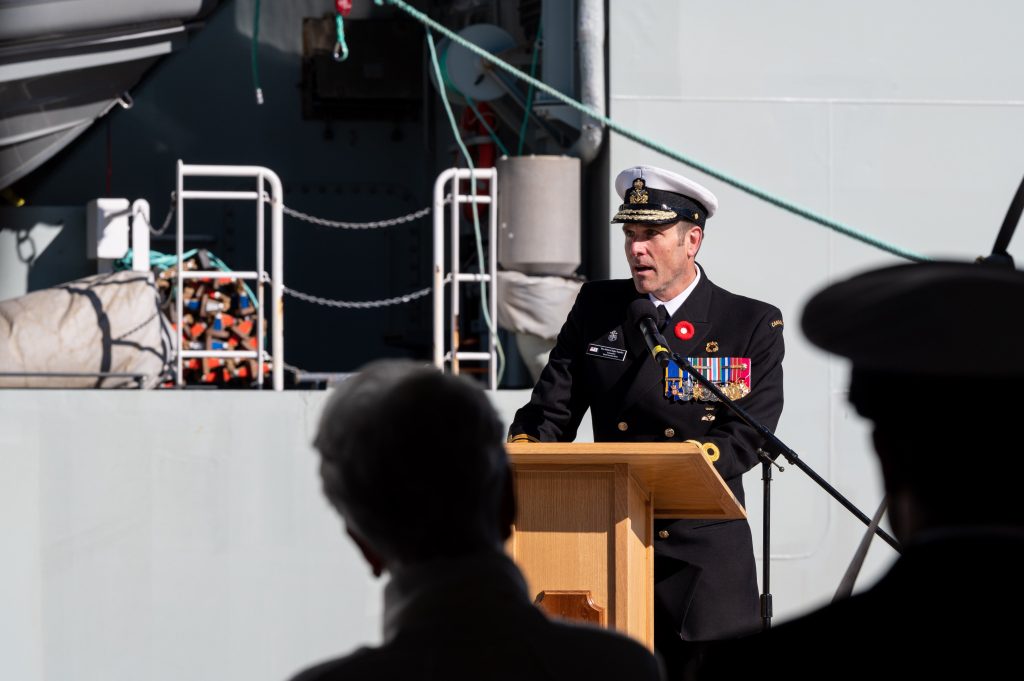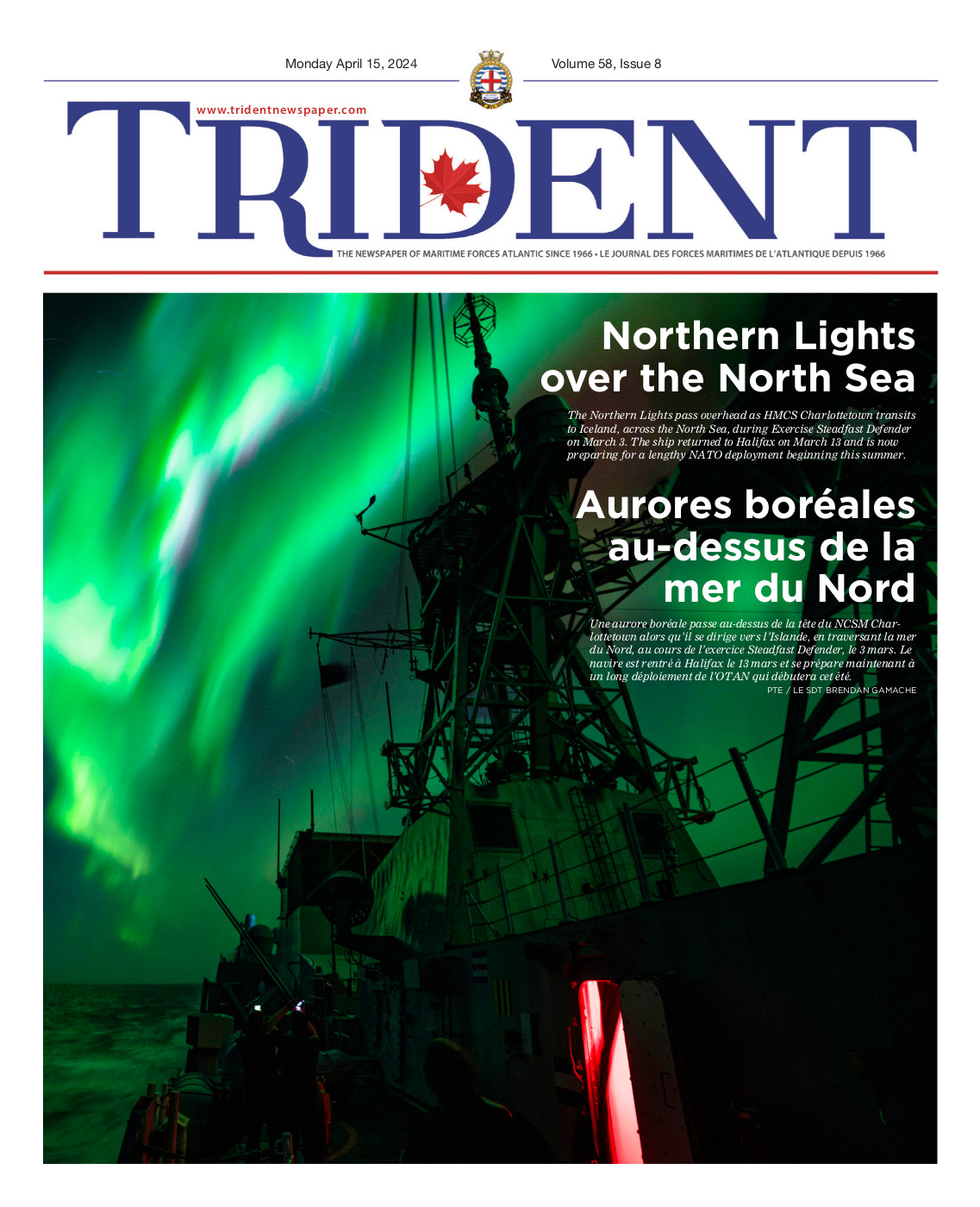
CPL CONNOR BENNETT
HMCS Margaret Brooke commissioned in Halifax after busy year
By Joanie Veitch,
Trident Staff
The Royal Canadian Navy’s (RCN) fleet of Arctic and Offshore Patrol Ships (AOPS) continues to take shape, with His Majesty’s Canadian Ship (HMCS) Margaret Brooke officially commissioned into service on October 28 at a ceremony held at HMC Dockyard Halifax.
HMCS Margaret Brooke — the first Canadian warship named for a woman — is the RCN’s second AOPS. The ship completed its first deployment, Operation Nanook in Canada’s North, in August.
On its return home from Nanook, the ship assisted communities along the southern coast of Newfoundland and Labrador ravaged by Hurricane Fiona.

CPL CONNOR BENNETT
“It is that work, showing how quickly a naval ship can re-role from one mission — Arctic sovereignty — to another — coming to the aid of Canadians — that shows the value of a ship like this one,” said Vice-Admiral Angus Topshee, Commander of the RCN, in his address, highlighting the ship’s ability to go straight from operating in Arctic waters to supporting Atlantic Canadian communities. He said the AOPS’s agility as a platform will help ensure the protection and safeguarding of Canadian interests, at home and abroad.
“Their ability to break through ice and operate in the far northern regions without support is what really delivers the capacity the Canadian Navy has been lacking since the 1950s.”
HMCS Margaret Brooke was launched in November 2019, delivered to the Navy on July 15, 2021, and officially named on May 29, 2021, in a joint naming ceremony with HMCS Max Bernays, the third of six AOPS being built for the RCN under the National Shipbuilding Strategy.
HMCS Margaret Brooke is named in honour of Lieutenant-Commander (LCdr) Margaret Brooke, an RCN Nursing Sister during the Second World War. LCdr Margaret Brooke (then a Sub-Lieutenant), received a Member (Military Division) of the Order of the British Empire for her bravery in trying to save fellow Nursing Sister Agnes Wilkie, and other passengers, after the steamship ferry SS Caribou was torpedoed and sunk in the Cabot Strait by a German U-boat on October 14, 1942.
Retiring from the Navy in 1962, LCdr Brooke went on to have a second career in paleontology, achieving her doctorate from the University of Saskatchewan. She learned the AOPS would be named for her on her 100th birthday, April 10, 2015. She died the following year, on January 9, 2016.
“It has been a very long journey to be able to stand here today at the commissioning ceremony,” said Allyson Brooke, Margaret Brooke’s youngest niece and the ship’s co-sponsor.
Having toured HMCS Margaret Brooke in the spring, Ms. Brooke commended the crew’s professionalism and skill, saying she was impressed by their dedication and willingness to perform their duties “to the highest calibre” — just as her aunt had done in the early morning hours of October 14, 1942.
“You all left an indelible impression on me. Your family, friends and commanding officer must be so proud of you all,” she said.
The ceremony included long-standing naval traditions, including a symbolic presentation of the “keys to the ship” to the Commanding Officer, Commander (Cdr) Nicole Robichaud, along with the raising of the ship’s commissioning pennant, the hoisting of the ensign and jack, and three cheers from the ship’s company and guests in attendance.
The ceremony opened with a blessing given by Honorary Captain (Navy) Elder Debbie Eisan, appointed as honorary captain of HMCS Margaret Brooke in June 2021, followed by Raymond Sewell singing the Mi’kmaw Honour Song.
HMCS Margaret Brooke is scheduled to leave Halifax early in 2023 for Operation Caribbe, where the ship’s company will work with the United States Coast Guard to counter narcotics smuggling and other illicit cargo in the Caribbean Sea and Eastern Pacific Ocean.






